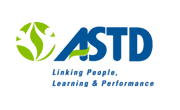 |
|
![]()
About ExpertC+Charge Prognose
Speaker Search
Latest Issue
Article Archive
Training & Meeting Resources
Subscriptions
Experts Only
Training is Thriving Despite the Economy; E-Learning is Poised for Growth
(Alexandria, Va.) February 27, 2002 - Companies are spending more on
employee training and e-learning has reached its highest level since 1997, according to The 2002 ASTD State of the Industry Report from the American Society for Training & Development (ASTD).Tina Sung, ASTD President and CEO, observed, "The continued growth in
training is encouraging. It illustrates that companies are beginning to understand the importance of investing in their people." Training expenditures for many organizations did not decline with the economic downturn; in fact, companies expected spending on training to grow a healthy 10 percent between 2000 and 2001. "Savvy leaders realize the importance of linking their training investments to the strategic business goals of an organization," Sung noted. "A learning plan is as important to an organization as a marketing or financial plan.""Unfortunately, the public perception of training is heavily influenced by the impact of the economic downturn on large, global companies, like those in the Fortune 500," said Mark Van Buren, Director of Research for ASTD. "Some of these highly visible companies have been hit hard. Most of these companies have experienced cutbacks in training expenditures that are likely to last into 2002," he said. "However, this is not the case for the small and medium size firms - ASTD's data shows that these organizations are continuing to invest in employee training, and these firms expect their expenditures to increase in the future."
Additional key findings of the study include the following:
- Total training expenditures increased both on a per employee basis ($677 in
Additional findings from the Report include a look at the major trends
shaping the workplace learning and performance industry. Practitioners and experts from various sectors including business, non-profit, and academia from around the world identified the top ten trends affecting the future of training and the workplace learning and performance field.The top three trends identified include:
1. Money: Increasing pressure from shareholders for short-term profits means
that there is a greater pressure on employees to produce results and on training to show a return on investment.2. Diversity: The growing cultural diversity of organizations means a
greater need for people with different backgrounds to work together and find better ways of balancing the 'local' with the 'global.'3. Time: The increasing expectation for just-in-time products and services
is resulting in shorter time frames for learning, often facilitated through technology."The top three trends mentioned above, in addition to others, create a
rapidly changing picture of the workplace learning and performance field," said Van Buren. "The data and trends in this Report show that learners are taking greater control of their learning, training providers are trying to demonstrate the value of the services and products they offer, and practitioners are trying to make their work more relevant to the needs of organizations and their employees," he noted.The 2002 ASTD State of the Industry Report includes findings from 367 U.S.
organizations that participated in the Benchmarking Service during 2001 and provided sufficient amounts of valid data on their training activities during 2000 and the latter part of 2001. The Benchmarking Service is free and participation is open to all organizations. Additional information on how to participate in ASTD's Benchmarking Service may be found here: http://www.astd.org/virtual_community/research/measure/bnch_svcs.html ASTD members may obtain a PDF copy of the Report on the Members Only section of the ASTD Website at www.astd.org . Others may order copies of the Report by calling the ASTD Customer Care Center at +1 703 683 8100. The cost is $34.95 for ASTD members and $54.95 for non-members. Use product code 190202 when placing your order.
